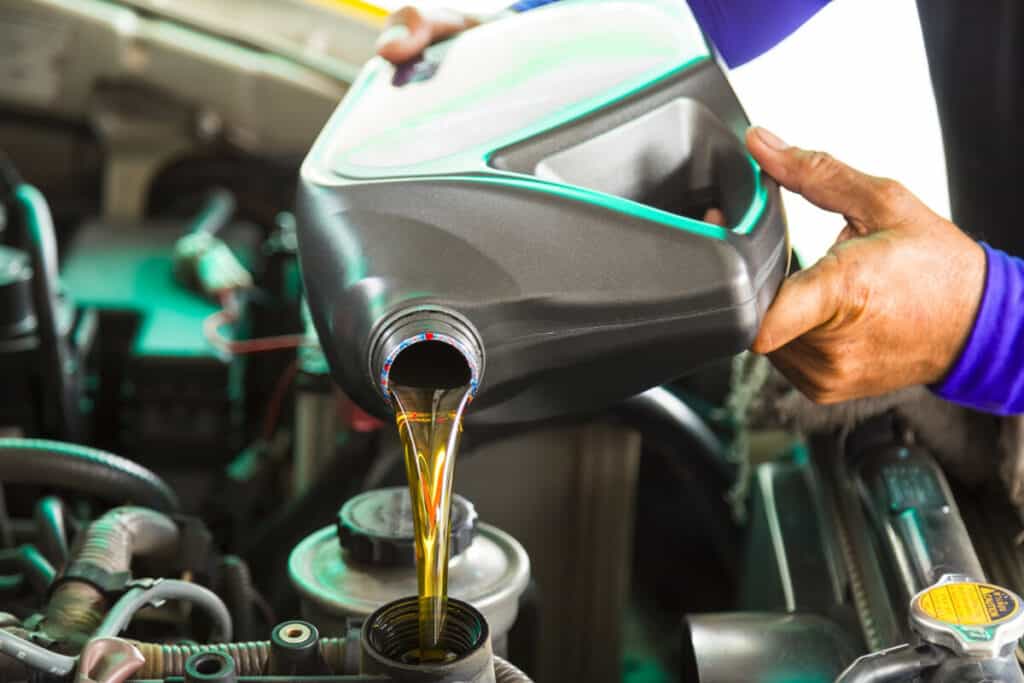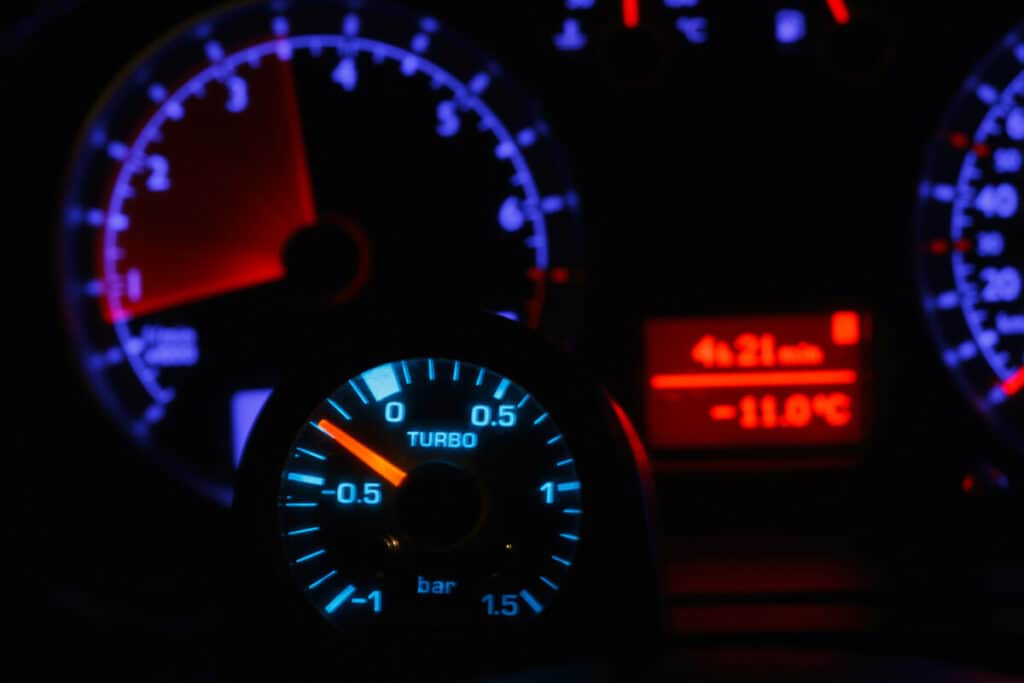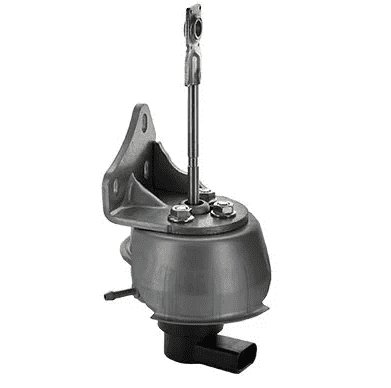If you suspect you have a blown turbo there are a few telltale signs to look out for that don’t take a mechanic to find. After reading this article you will know exactly how to tell if your turbo is blown, below is a list of common symptoms that come with a blown turbo.
- Sudden lose in power
- Bluey grey smoke coming from the exhaust
- Vehicle struggles to maintain constant speed
- Engine struggles to accelerate or rev above 2,000 RPM
- Oil leaks
- Engine management light illuminated on the dash cluster
Being able to correctly diagnose a blown turbo will save money and give you the knowledge you need to negotiate a fair deal with the repair costs.
Sudden Lose in Power
The most noticeable and usually the first sign people get that their turbo is blown is they notice a sudden loss in power. The reason for this is that the rotating shaft inside the turbo has either seized stuck, or the compressor wheel has gotten damaged, usually due to a foreign object such as a small stone entering the turbocharger and colliding with the compressor wheel.
Foreign object induction is a common problem if you have an aftermarket air filter installed or no air filter at all. This is because cheaper filters sometimes fail and either let dirt past the filter and into the turbo, or the filter itself begins to disintegrate and the bits get sucked into the turbo causing damage to the compressor wheel.

If your engine has a stock air filter box, it is more likely that a seized shaft is the reason your turbo is blown.
The reason a turbocharger would seize stuck is either because of insufficient oil reaching the turbocharger or low oil pressure, which would also result in insufficient oil in the turbo. Either way, once you starve the turbo of oil, it will very quickly become extremely hot.
This heat causes thermal expansion to occur in the materials the turbo is constructed from, resulting in the rotating parts swelling up and locking together. A turbo is designed to tolerances within thousands of an inch so it is easy to see why these rotating parts need clearance to move.
The most common reasons for a seized turbo are:
- Incorrect oil type
- Incorrect service intervals
- Not warming up the engine before fast acceleration
- Restricted oil feed blocked, kinked or damaged pipe
- The oil pump becoming weak and unable to feed the turbo with sufficient amounts of oil
The best way to prevent this is by keeping your engine serviced regularly with the manufacturer’s recommended oil type and educating yourself on how to prolong the life of a turbo.
If you are unlucky enough to suffer a seized or damaged turbo, a replacement is the only option due to the irreparable damage being done to the internals of the turbo.
A replacement turbocharger (model dependent) will cost you between $500 – $1500, the bigger the car the bigger the turbo, and a bigger turbo has a bigger price tag.
Blue/Grey Smoke Coming From The Exhaust
If you notice bluey-grey smoke coming from the exhaust this is usually a sign that the turbo is about to “blow” or needs to be rebuilt before complete failure. If the smoke coming from the exhaust is extremely excessive, well then you know your turbo is blown.
Turbochargers need a sufficient amount of oil to keep the center shaft adequately lubricated. At either end of the shaft is a set of oil seals (rings) to keep the oil inside the oil chamber and stop it from leaking into either the compressor or exhaust housing of the turbo.
Over time these rubber oil seals become worn and damaged, due to heat and wear. Once this happens the rubber seal begins to deteriorate causing the seal to break and leak.
Once the seal is broken the oil will then leak into either the exhaust side or the compressor side of the turbo. If oil leaks into the exhaust side the heat from the exhaust will burn the oil away causing plums of blue smoke from the exhaust pipe.
At first, you may not even notice the smoke due to the low volume of oil leaking, but over time the leak will eventually get worse resulting in more and more smoke coming from the exhaust.
To get a better understanding of how a turbo works you should check out this article.
The first noticeable sign of worn oil seals in a turbo is you will need to top the engine up with oil more regularly. This is due to the oil escaping through the turbocharger. By keeping an eye on the level of your engine oil it will be easy to tell if your turbo needs attention.

Fortunately, oil seals in a turbo can be replaced by getting the turbo rebuilt, this would cost a quarter of the price to replace the turbo with a new one.
An important thing to note is that, if you plan on rebuilding the turbo, don’t wait until it is completely blown, because once failure occurs other parts may become damaged and the turbo may well be irreparable.
So if you notice blue smoke coming from your exhaust, keep an eye on your oil level over the next week or two, if you notice it using more oil than normal have a professional take a look, it will save you money in the long run.
Oil Leaks
Oil leaks are never far away when it comes to blown turbos. This is because oil seals are a common cause of failure in a turbocharger. When the oil seals are worn in a turbo, oil can leak from either the exhaust, turbo, intercooler, or air filter, so either the front or back of the car.
Oil Leaking From The Exhaust
If you notice oil leaking from your exhaust it would be a sign that the oil seals in the exhaust side of the turbo are worn and oil can travel down the exhaust pipe, eventually ending up on your driveway.
Oil Leaking from Intercooler, Pipes, Turbo
If oil leaks into the compressor side of the turbo it is a little harder to notice because rather than the oil burning away and causing smoke, it will instead be blown from your turbocharger into the air filter and intercooler as the engine draws air from the turbo.
This can be harder to spot because instead of leaking straight out the oil will pool in low spots of the intercooler piping until the seal in the pipe eventually breaks allowing the oil to leak out.
This is especially a problem if you have front mounted intercooler because the intercooler is lower than the turbocharger meaning the oil will collect in the bottom of the intercooler causing blockages and eventually leading to other engine-related problems down the line if not drained and repaired.
The simplest way to check for this is by removing the air filter that is attached to the side of the turbo and checking it for signs of oil, another way is by removing the big intercooler pipe that is attached to the compressor outlet port on the turbo.
If the seal in the compressor side of the turbo is gone, inside this pipe will be covered in oil and if your intercooler is front mounted you may bet it’s half full of oil.
Vehicle Struggles to Maintain Constant Speed
If you find it hard to maintain a constant speed it may be a sign your turbo is blown or about to blow. This can happen for a couple of reasons, the most common being the seal in the compressor housing has blown resulting in lost boost pressure.
A telltale sign your turbo is losing boost pressure is you will hear a hissing noise coming from the engine when you are accelerating. If you hear a hissing noise you first need to rule out blown intercooler piping, which is very common, this can easily be done by removing the piping and visually inspecting for any signs of wear or damage.
If all the piping is ok you will need to get the turbo pressure tested, most auto shops can carry this test out pretty simply. If the turbo fails a pressure test you either need to get the turbo rebuilt or replace it with a new one.
Engine Struggles to Accelerate or Rev Above 2,000 RPM
If your engine struggles to accelerate or rev above 2,000 RPM it could be a sign of a blown turbo. Turbochargers are fitted with a wastegate which is a vent that allows exhaust gasses to escape once they reach a certain pressure.
Most stock turbos come with an internal wastegate which in older models was a flap inside the turbocharger that opened and closed, but newer model turbocharged cars come with a variable vain wastegate which causes massive problems, especially in cars with high mileage.
The problem with this type of actuator is that rather than a flap it is a series of vanes that open and close, but over time inside the turbocharger becomes covered in black gunk and carbon which causes the veins to seize closed resulting in the engine not being able to accelerate or rev over 2,000 RPM due to the pressure build up inside the turbo.

The reason I know this is that I had that exact problem myself with a diesel Toyota, fortunately, I knew how to strip down the turbo, clean it out and reassemble it, but it wasn’t an easy DIY job.
If this sounds like the symptoms your engine is experiencing there is one thing you can try:
First, locate the turbocharger in your engine bay, then look for the actuator that controls the wastegate, it’s a round thing with a lever on it, like the one shown in the image below.
Now try moving the lever in and out with your hand, you should feel some resistance but it should move, if it doesn’t the wastegate is likely to be your problem.

If your wastegate is stuck your car may feel like you have a blown turbo but if you take it to a good mechanic he will be able to fix it or do a small rebuild, but before you spend money on a mechanic you should know exactly what you’re talking about, the best way to do is by checking out this article covering absolutely everything you need to know about how turbos and wastegates actually work.
Engine Management Light Illuminated on The Dash Cluster
Another sign you may have a blown turbo is that your engine management light may have come on which would indicate a malfunction.
Although this light is pretty generic and could mean anything, the safest thing to do is take your car to a local mechanic and have them run a diagnostic check on the vehicle, this will tell them exactly what is bringing on the light and how best to fix it.
Nowadays diagnostic checks are relatively cheap and only take a couple of minutes to diagnose, so don’t let a mechanic tell you it’s a big job that takes hours.
Can a Car Run With a Blown Turbo
A car can run with a blown turbo long enough to get you safely off the road, anything further than that and you will likely cause further damage to the engine by the engine ingesting broken bits of the turbocharger into the engines cylinders which would result in bent valves, cracked pistons, etc. meaning a complete engine swap.
Conclusion
There are many different warning signs an engine will give before the turbo blows, by reading this article you are equipped to diagnose and decide on the next course of action. But if you want to save yourself the time and stress in the future, I would highly recommend taking a look at the list of things you should NOT do with a turbo engine.
Recent Posts
Are Turbos Reliable or Do They Break Easily? [What not to do]
Since the invention of the first turbocharger in 1905, the automotive world has never been the same again, due to the immense amount of power a simple turbo can add to a combustion engine. But since...
